Game of the Month: Marvel's Guardians of the Galaxy
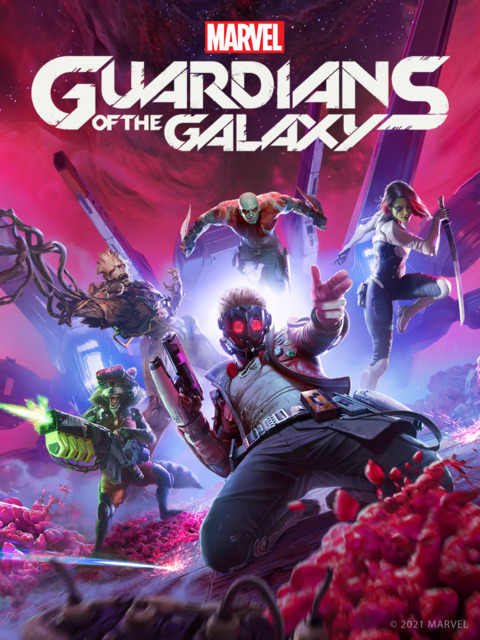
April's been a relatively chill month as far as my gaming is concerned, which is how I like it given Mays tend to be comparatively busy with all the daily (or close to it) blogging I tend to do for May Madness and its many variations over the years, including a new one about to drop this week. As such, the only "big" game on my list that I managed to complete in April was the Eidos-Montréal adaptation of Marvel's Guardians of the Galaxy which, much like the Avengers game, is sourced from the original comics rather than the Marvel Cinematic Universe. That means a blonder Star-Lord, a Gamora with more face tattoos, and some unfamiliar alternative backstory that the game quickly catches you up to speed on. I'm glad I was able to get a better sense of how GOTG fits into the "traditional" Marvel universe after enjoying those James Gunn movies, but that's really only one quality of many in this game that I'm thankful for.
Marvel's Guardians of the Galaxy pulls a typically "cosmic Marvel" storyline about an infinity stone running amok, drawing in various figures from the Infinity Stone Saga series (though sadly I didn't get to see Galactus or the Living Tribunal show up; maybe next time) and then grounding the OTT ridiculousness of those storylines with the inherent humanity (or alien equivalent) of the flawed, traumatized, doing the best they can to hope for a better tomorrow ragtag group of ex-convicts, mercenaries, and adventurers that are the Gardeners of the Galaxy (patent pending). The game sticks to the traditional five—Star-Lord, a dispossessed "Terran" with a human mother and a very important alien father; Gamera, the brainwashed "daughter of Thanos" who is seeking a new path after finally escaping from his influence; Drax the Destroyer, the overly literal (and overly frank) hulking warrior looking for a reason to keep living after fulfilling his quest for vengeance; Rocket, a not-raccoon (according to him) former lab experiment and current technical whiz that struggles to trust others; and Groot, an empathetic "forest sentinel" of a now-destroyed arboreal world who found a family in Rocket and the other Guardians—but makes sure to still feature movie-popular members like Mantis and Cosmo, though Yandu is missing (and still very much pre-redemption arc) and Nebula is... well, probably someone they were hoping to bring back in a sequel game, maybe.
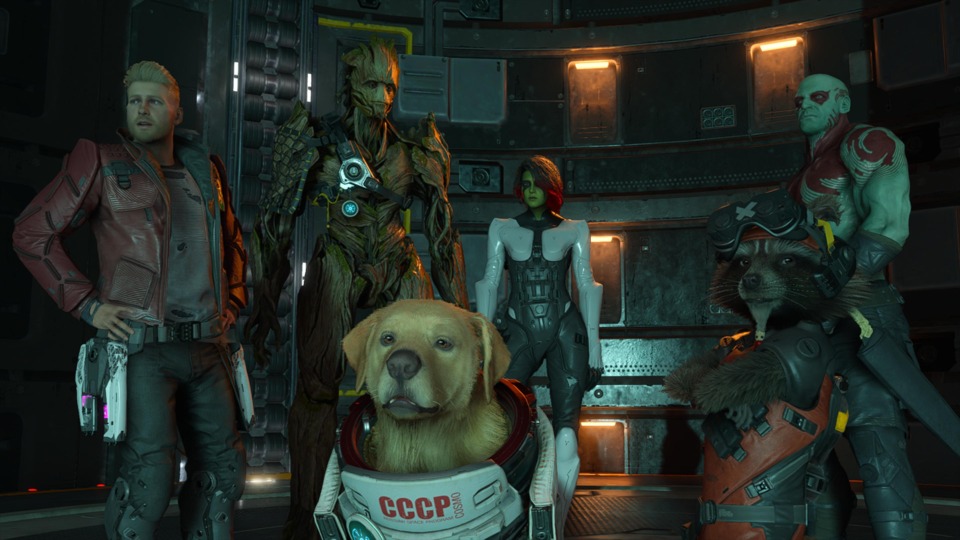
The game plays like a combination of a Tomb Raider—something Eidos-Montréal has experience with, being the main developers of Shadow of the Tomb Raider, the third game of its most recent reboot series—and a team action game like the Avengers, for which they lent support development to Crystal Dynamics. I got also a lot of The Last Story from its approach to a party-based real-time action game with a tactical element where you don't so much serve as the main muscle but the support. You only ever play as Star-Lord who relies on his admittedly pretty sweet pair of Halo pistols with elemental powers that are unlocked throughout the game, shooting at targets while instructing other members of the Guardians to perform their strong but cooldown-limited attacks to soften up larger groups or eliminate major threats quickly. A typical melee would either have you take on a large group of enemies with a few troublesome leaders, where a "divide and conquer" strategy might win the day, or else fight one or two larger foes with multiple health bars that you'll need to whittle away at while you wait for some cooldowns to end. As leader, you'll also be required to help any Guardians in trouble, either by distracting the enemy that has them on the ropes or by picking them up from the floor like they were companions in any other third-person shooter. There's also the option to "huddle up": this mechanic not only perfectly plays into the running goof that is Star-Lord's frequently-unreliable tendency to rouse the group with an encouraging pep talk, but gives the game its chance to have a cool hero team sequence (and requisite Mama Star-Lord-approved "classic rock" needledrop) when you hit the right prompt and give everyone a huge (if very temporary) boost.
I also love the visuals in the game, making the outer space part of the Marvel universe one that has a lot of trippy '60s/'70s flair by drawing on the original Jack Kirby artwork for the Infinity Wars (and other early cosmic Marvel) storylines. Things are just arbitrarily striped or polka-dotted or given garish color schemes and it not only makes all the sci-fi-typical asteroids and starship wreckages and seedy space ports more interesting to look at but also gives the game its own very distinct aesthetic. The monster designs are very cool too, where even a repurposed mining robot turned durable enforcer has a sleek and otherworldly appearance (they seriously look like something out of Evangelion). The game takes an opportunity to draw on a lot of Marvel lore for both its main plot and a whole host of incidental audio logs, journal entries, or one-off cameos like the Collector's museum on Knowhere, the dubiously legal trading post situated inside a dead godlike alien's head hovering around the rift at the end of the universe. Like, how can you even go wrong with a setting like that?
Last, I just want to say that the writing is very good, finding that comic ensemble energy that the movies helped to polish with certain comedic character traits like Drax misunderstanding metaphors or Rocket's casual misanthropy while still giving the game some earned serious and/or heartfelt moments (many of which are optional and relate to the collectible gifts you can find for your teammates) throughout. If I had to point to any problems with the game they would probably have some relation to how unoptimized it is for previous-gen systems—an ongoing issue with many new PS4 and Xbox One games I've played in the last couple years—especially with regards to its absurdly long load times, and I really didn't care too much for the few sequences where you're directly controlling Star-Lord's ship, the Milano, since there was something oddly unintuitive about the way it handles. Minor gripes, though, so I have to admit Jan was in the right about this one. It's probably my favorite superhero game since... maybe Arkham City? Hope to see another one of these eventually, despite how unlikely folks make it sound, but even if Eidos-Montréal's next game turns out to be another Deus Ex as has been rumored I'd be perfectly OK with that also.
Darling Indies and Other Gaming Tomfoolery
The tomfoolery was particularly potent this month since I had the ugly notion of penning an April 1st blog, which I then proceeded to take too seriously to the extent that I ended up tricking myself more severely than anyone else. The idea was to take 64 in 64, my recurring Nintendo 64 feature, and instead tweak some variables to make it an Xbox 360 feature called 360 in 360 instead. This required that I play two games for six hours each, which might've been pushing things for the sake of a one-off joke, but it finally gave me an opportunity to try the fourth Star Ocean game, Star Ocean: The Last Hope, which had been sitting unplayed on my shelf for well over a decade and change. Of course, my original plan was to play this copy of Warhammer 40,000: Space Marine with a view to completing it before the six hours were up, but despite an imminent sequel no-one's thought to make it backwards compatible on Xbox One yet. I guess that's on Embracer and their well-established talent for forward-thinking. Anyway, Star Ocean: The Last Hope seemed fine as real-time action RPGs go if not something I have the time to invest in right now (the achievement set is a nightmare too, so that's another disincentivizing factor) and the second game, Grabbed by the Ghoulies (which, as has been pointed out, is not a 360 game), had some neat ideas for a haunted house brawler with plenty of mission design variety but just as many player-unfriendly choices like some obnoxiously difficult encounters and an end-game speed challenge for the best story conclusion that you could only attempt once per new game. I did at least manage to finish Grabbed by the Ghoulies shortly after the six hours were up though, so that's another semi-classic Rare game scratched off the ol' bucket list.
The Legend of Zelda: Tears of the Kingdom
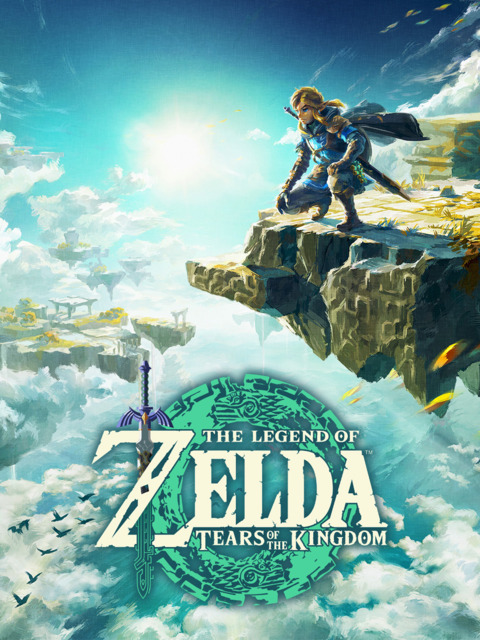
I also started Tears of the Kingdom this month and... man, I just really don't care for the new Zeldas at all. This one doubles down on everything I didn't like about Breath of the Wild and adds more bullshit besides, and then makes it twice as long even though I was dangerously close to burning out on BOTW several times far from its conclusion. Turning this game into Banjo-Kazooie: Nuts & Bolts does not endear it to me in the slightest, because fiddling around with those awkward Ultrahand controls for minutes on end to bolt a bunch of random detritus together only for it to fall apart or explode or float away just puts me in a spot to keenly understand how my remaining time on this Earth is rapidly diminishing at a rate heretofore unacknowledged, blessed as I was to play games that didn't waste my time quite as overtly or as painfully as this overbloated mess does. I could stick to the combat except there's precious little to zero incentive to fight anything because you'll just wind up breaking your best gear, using up some of your remaining meals to heal, or else just die and lose a bunch of progress (including compendium entries, which sure was nice of them). Maybe I'll turn around on it and see in it that everyone else apparently sees, especially those headcases that think these 100-hour ordeals are anywhere close to the concise perfection of a Link to the Past or an Ocarina of Time, but right now it's looking like the one Zelda game I won't be able to bring myself to finish. And I completed Skyward Sword and Spirit Tracks without issue.
The Zoomers turned Zelda into Rust. That's so skibidi of them.
...Or, at least, that's how it started.
I have been slowly acclimatizing to the game and the new powers, and there's no escaping just how much content there is out there to find and add to one's itinerary of quests, sidequests, side-activities, shrine hunts for some much needed health/stamina upgrades, and just general fucking around looking for Korok seeds or a new cave with one of those bubble toads or taking pictures for your compendium even if most of these distractions feel like there's no immediate rewards behind them. (Of course, it might just be I haven't found the right NPC yet—I just found some woman very eager to reward me for how many wells I'd jumped down. Wells, huh.) Using Ascend to quickly scale trees or Rewind to visit sky islands on the express falling block transit opens more opportunities to collect crap I probably don't but still might need, like all these opals, all the while catching a glimpse of another half-dozen targets on the horizon. It's still got that wanderlust appeal of the previous game, even if I'm still not wholly won over by the amount of crafting puzzles involved. Plus, I miss having explosives at my beck and call; there's so much you can do with phantom bombs that appear in your hand whenever you need them. Could be that I get all the previous game's powers back at some point, but there's no space on my quick use wheel for them so I dunno. Also, I'm still very very slowly getting used to which trigger button does what and I still end up throwing my weapon away one time in five whenever I'm trying to Ultrahand another Frankenstein construct together. I guess one benefit of a game this needlessly big is that you have all the time to eventually adjust to any control scheme no matter how convoluted.
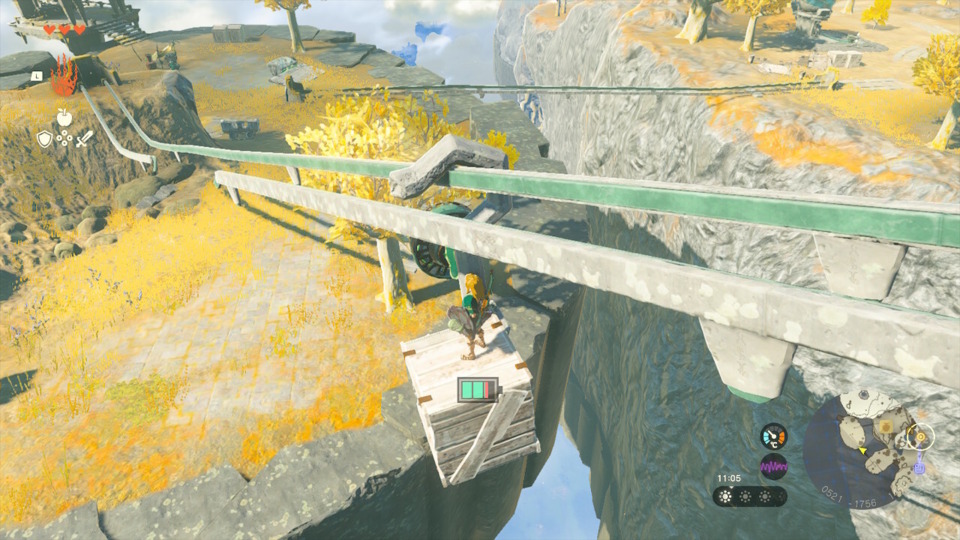
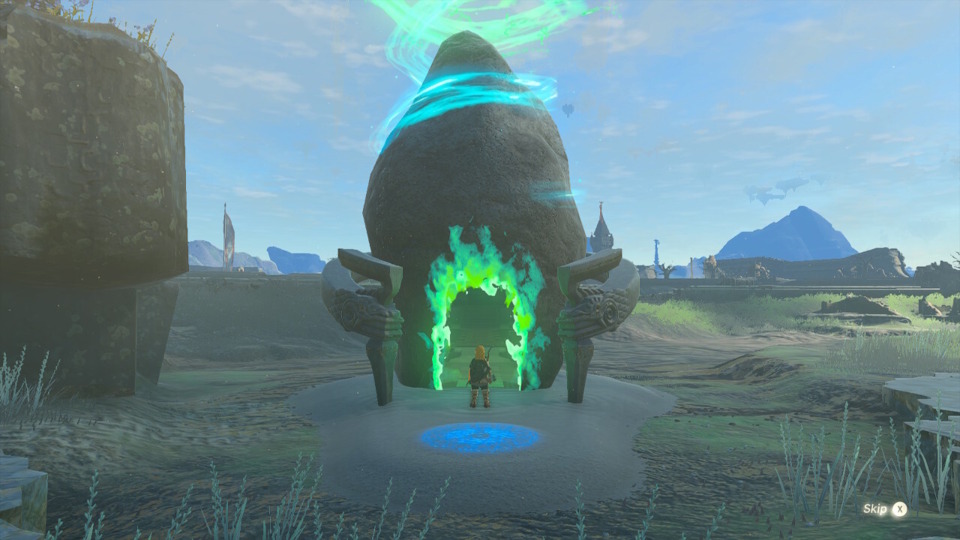
Tears of the Kingdom might be next month's GOTM or I might've dropped it entirely for any of the other large games in my backlog—and man do I have several—so I guess it's a wait and see for now.
Oh, right, speaking of wasting time I'm still playing Pictlogica: Final Fantasy. The wait duration for the next area unlock is 120 hours now, which is kinda stupid even for the usual F2P tactic of preying on the impatient. You want to keep players right on that there fishing line by making these delays just annoyingly long enough to get them to fork up for an access pass, but forcing them to wait entire weeks at a time is just going to push them away all the faster. Like there aren't a whole bunch of F2P gacha games they couldn't be wasting away with instead of opting to just sit there for days being denied entry to more chocobo pixel art. Anyway, picross is good times. Expect more picross in the months to come. I have a problem.
WonderSwanning, Mega Driving, and Sixty-Forging Ahead
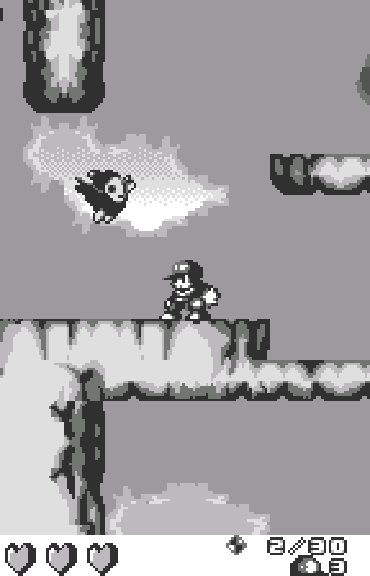
Over here in the retro corner it's been mostly business as usual. I should probably try to make it sound more exciting than that given how much time and energy I pour into my old game pursuits but, as always, most of what I do is for my own edification and amusement and drawing in an external audience is a mostly incidental happenstance. Just mentally going full solipsist this month, don't mind me.
The third entry of Anyway, Here's WonderSwanfeatured the first game I was invested enough to complete in full, at least if you don't count the short runs of something like Magical Drop, and was also where I had my first encounter with WonderSwan Squaresoft. Blue Wing Blitz is a fascinating "Front Mission but with airplanes" strategy-RPG that seems a little too involved to play in a foreign language but from what I did see it was enough to provide an insight into the type of portable experiments Square was looking to explore at the time. Meanwhile, said game I was compelled to finish was Kaze no Klonoa: Moonlight Museum: the first of what would be several portable Klonoa games, which switched focus from the main series' trademark "two-and-a-half dimensional" platforming action for something that more closely resembled the puzzle-platformers that usually work better on portable systems. Something about the slower pace and the ratiocination factor fits that smaller world so much better, somehow. Other featured games for Part Three included: a Super Robot Wars entry I wasn't in any place to decipher, lacking as I am in Japanese language and mecha anime expertise alike; the Arc System Works portable fighter Guilty Gear Petit, which already ranks up there as one of the better-looking games for the system that I've seen so far even if fighters aren't my deal; and Gomoku Narabe & Reversi Touryuumon, a pair of anodyne board game adaptations which are easy enough to play even without knowing the language.
The Mega Archive dipped into the library of its CD cousin once again with Mega Archive CD: Part IX, providing what has now become the standard mix of Japanese RPGs, FMV disasters, and slightly enhanced Mega Drive ports. Vay was the game I was most drawn in by this time, as a CD-enhanced but otherwise dry turn-based RPG notable perhaps only for having a Working Designs localization (so that's more shoehorned-in jokes) and a general premise that sounds much like that of Krull, one of my favorite fantasy movies growing up. Other highlights of this autumnal Mega Archive CD include: Ground Zero: Texas, a FMV shooting gallery with an entertaining Invasion of the Body Snatchers sci-fi story which recently saw a remaster; Dark Wizard, a first-party strategy RPG that mostly uses summoned monsters for its troops and follows four different story "campaigns"; and Arslan Senki, a Fire Emblem-esque adaptation of the manga/anime about a Persian prince (not that one) retaking his kingdom after his monarch father is betrayed and killed in an invasion. Even if this entry was mostly Mega Drive remasters, there were still a few exclusives worth a look.
Finally, we had the forty-first episode of 64 in 64 this month which saw us take on Bomberman 64: The Second Attack!, a sequel that tries to walk back some of the more divisive elements of its predecessor to create a sort of "best of both worlds" 3D Bomberman amalgam; and Mahjong 64, an utterly unremarkable mahjong sim that I nonetheless had to figure out how to make entertaining after a quiet hour of rons, pons, hans, and yakumans. Neither game was terrible I'm glad to report, though I'll admit to being somewhat underwhelmed by both. Hopefully the blog itself made up for all that interactive mediocrity with some facetious self-deprecating commentary on how I'm probably the last person who should be dropping bombs or tiles, respectively.
My hint for the next two games to feature on 64 in 64: The pre-select choice is possibly the strongest licensed game on the system that doesn't involve British spies, and the random pick is a surprisingly lucky selection that sees us finish off a small batch of N64 games based around a specific theme or format.
The "Indie Game of the Week" of the Month: Ghostrunner (One More Level / Slipgate Ironworks, 2020)
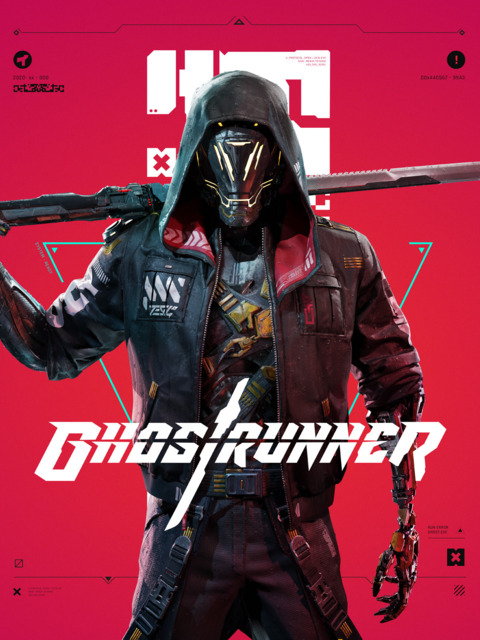
Due to being a curated affair, conversely to the crapshoots that are my regular retro features, this month's four Indie Games of the Week were uniformly excellent if only lacking in a few areas. A typical "four out of five" sweep in other words; I'm getting worse than IGN with my lack of scoring variation, but then I do tend to gravitate towards games I'm probably going to like (which, now that I've written it out, occurs to me as being a very normal thing to do). Top of the heap this time is the stylish cyberpunk FPS-parkour Ghostrunner (#366), though I suspect I was just won over by how slick it was. Definitely not the usual type of game I feature on IGotW (though the structurally and mechanically similar Severed Steel came up not too long ago) but one I was glad to add to the roster, given its unusual focus on tactically maneuvering around an arena for a surefire kill while avoiding same from the incongruously accurate goons. Just the platforming alone, usually such a hard sell in a first-person game, was effortlessly engaging with its combination of wall-runs and grapple hooks. Made me restless to try out that long overdue Metroid Prime 4 reboot. Maybe I'll fold and get that remastered version of the first game (though I'll admit to being intrigued by the ultra-sharp Dolphin emulated version with its modded keyboard and mouse controls; I should be in the clear to play that, since I do own the original GameCube version after all).
The other three games were, well, I guess proof if proof was needed that I have a type when it comes to the usual fare for IGotW. Specifically, they're all 2D action games with a heavy explormer focus. Salt and Sacrifice (#364) is the follow-up to Ska Studios's Salt and Sanctuary, one of the first in a wave of games to marry elements of 2D explormers and FromSoft's Souls series, which turned out to be a match made in heaven (albeit the uncommon sort of heaven that is murderously difficult to survive). To distance itself from its predecessor, it went for a more Monster Hunter affectation with its large number of "mage" bosses that often show up and cause trouble while platforming before bailing on you. Once you've joined "the hunt" for a specific mage, though, you can use an indicator to follow them back to their lair and finish them off for good, procuring a bunch of crafting ingredients for cooler gear in the process. I'm not sure the new additions did much for me but the unblemished core was still appealing enough as a fan of both its components.
Eiyuden Chronicle: Rising (#365) is more of an action-RPG with just a handful of explormer indulgences, specifically as it relates to a bunch of elemental barriers that you eventually earn the means to destroy as the story mandates. Most of the time you're just doing odd jobs for the bustling frontier village you adopt as your home in the process of finding some enormous treasure to take home to your scavenger family. It takes a little after Valkyrie Profile, much like Team Skullgirls's Indivisible before it, by giving you multiple party members each with a dedicated attack button so you can mix and match their attacks to create effective combos that keep enemies airborne and harmless until they either die or you run out of steam. It's meant to set the stage for Eiyuden Chronicle: Hundred Heroes, which came out shortly after the review went up, so now I'm established enough in that world to take on that Suikoden-like in the (hopefully near) future.
Last, we have the pretty 9 Years of Shadows (#367), which is a much more traditional explormer experience of traversal upgrades and the like. Set in a world vaguely drawing from Greek mythology and giving the protagonist some elemental powers to switch between (which recalled the semi-recent Record of Lodoss War: Deedlit in Wonder Labyrinth, another one of these that took Symphony of the Night as its clear inspiration) it's a showy game but also a relatively shallow one given a relatively small number of power-ups and enemy types. The movement is really good though, especially once you start unlocking the alternative "forms" of the elemental armors you find: they're built to help you quickly traverse certain hazards and environmental features like waterfalls or wall gaps and will quickly switch between forms automatically so you don't, say, accidentally wander into a poison room without the requisite green/nature armor equipped to mitigate the harm. It's a very accommodating game that has plenty to offer if you're looking for a more low-key explormer with some attractive visuals and a moderate level of challenge (barring a couple of nightmare bosses).
The Bonus Indie: Boomeroad, Doronko Wanko, and Nottolot (Bandai Namco, 2024)

At the end of last month Bamco put out three gratis games on Steam that they presented as something akin to tech demos from smaller divisions within their company that were intended to give the new employees assigned to them some valuable experience in creating a game, familiarizing them with every step of the (typically quite long) development cycle from the concept phase to the final tests and tweaks. Sort of like an internal game jam. I hear Double Fine and Game Freak are also fond of this practice, tossing the figurative pigskin to those lower down the totem pole to see what sort of potential these newbies might have in them as they work on original one-offs between their usual tasks of fetching coffee and tedious quality assurance. All three of these games are very brief—about an hour in length, if that—but ably demonstrate some novel concepts that, while as yet unpolished, could feasibly become fully-featured video games of their own if only as the sort of lower-scope downloadable game that we generally (and often erroneously) consider "Indie". I wanted a chance to check out all three of these just in case these fine auteurs-in-training end up working on the next Tales RPG, possibly even integrating these presently-inchoate game concepts into a themed dungeon or something. Given it's Bandai Namco though, one of the biggest publishers on the planet, it's hard to really make the case for them being Indie. Too short and too ambiguous in its Indie credentials to qualify for an Indie Game of the Week: that's a candidate (or three) for the Bonus Indie section if I ever heard it.
Boomeroad has you control some kid (he kinda looks like Quote from Cave Story, though I'm sure that's coincidental) as he makes his way through perilous ruins floating in mid-air. By finding two distinct monoliths he is able to open the way to the next region of the ruins with the ultimate goal of entering a large tower in its peak. To get between all these floating blocks and other detritus though, he makes use of an ancient boomerang that can create temporarily solid rails in its wake. The player can then ride these rails from one spot to the next, even creating new paths in midair—however, until the player touches ground again, they can only generate so many meters of rail before they run out. The game has two small-to-moderately-sized areas to explore, each with five optional collectibles which serve to extend how far their boomerang rail juice will last, and then taps out with an open-ended conclusion fit for a larger version of this game to explore in further depth. It's a pretty chill game all told and in its current state it's a bit too easy to break the game's progression by flying over most of the obstacles; however, that merely serves to demonstrate the boomerang tech better which is probably more the goal here. I could definitely see this being incorporated into some wind/air-themed elemental dungeon should Tales ever take to platforming challenges the way Ys has in recent iterations. It could still fly as a full game on its own too of course, with perhaps a little more moderation and polish. The pathing for the boomerang could definitely use some work too.
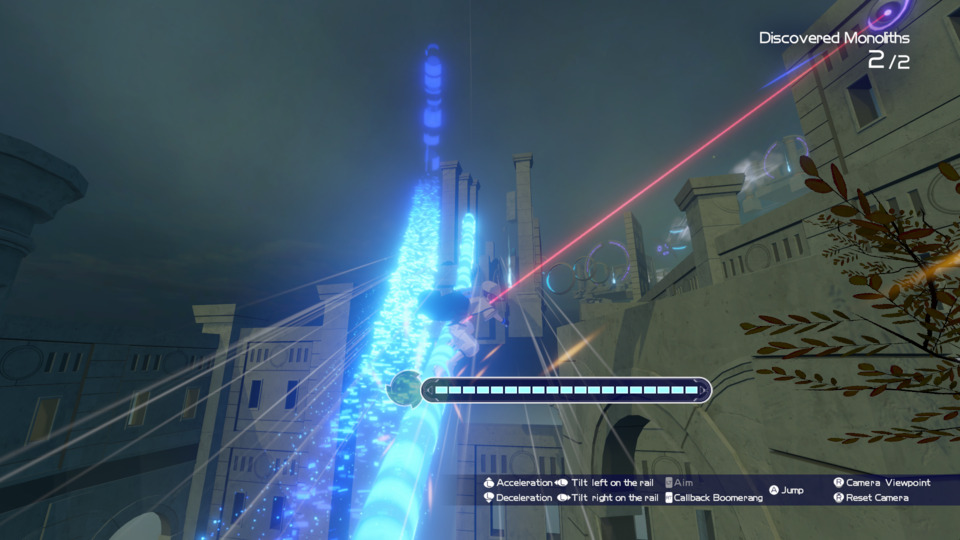
Doronko Wanko is a game where you just absolutely trash a bougie open-plan household from its oversized nursery on the second floor to the expensive wine cellar beneath the kitchen, using your tiny but surprisingly absorbent Pomeranian body as the muddy paintbrush for the biggest canvas a little doggo could wish for. The basic mechanics are to shake mud in order to cover the floor and nearby furnishings with a healthy coat of grime and a button that rolls around in the muck you've made to replenish it. The logistics of this infinite mud loop aren't worth thinking about too hard; the goal is simply to spread mess everywhere with a running tally of how much damage your antics have caused this family of four whose only sin was to leave you (mostly) home alone. Milestones in this tally unlock new items: some are cosmetic, some act as platforms to get you to new areas, others just serve to add even more chaos into the mix by way of something like a back-mounted paint cannon. The "trash a normal suburban house" genre has been in decline since its peak in the Wii era with Elebits/Eledees, and the game wisely supplements its very straightforward mission with dozens of bonus challenges to decipher and accomplish, though most boil just down to either spraying mud on a thing or picking up a thing with your mouth and have it create even more clutter. There's also an endgame and you do have to work a little to find it, but for the most part it's a free-form mischief simulator that allows you to live everyone's guilty secret pleasure of turning a well-ordered world upside down as a cute little canine. Only issue I have is that name: in Japanese Doronko means muddy and Wanko is just a generic cute dog name (an English equivalent might be Mr. Woofy) but it doesn't really sell the premise as well overseas. I'd probably call it something like Pupheaval, but then I'm a monster as has already been thoroughly established.
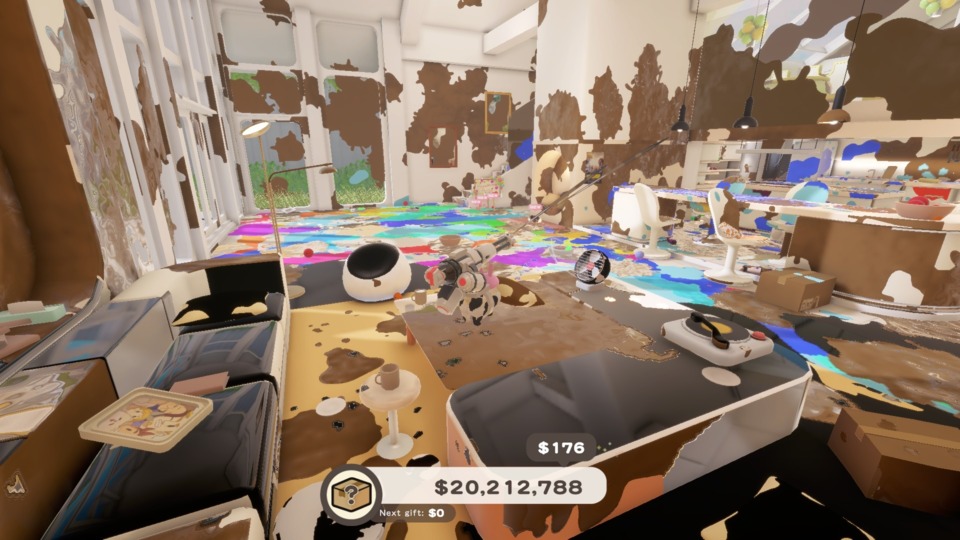
As for Nottolot, well, there's not a lot to say. You play as a spherical robot that has broken free of its futuristic assembly line and wishes to escape to the outside world. Its only ability besides rolling around is to hack into and control other robots, each of which has some sort of hemispherical indentation for you to stick into. You'll want to do this because every robot is set on destroying you on sight: once you've hacked in, though, you're safe. Each of the three robot types also has its own abilities: the little walkers are protected from electrified floors, the flying guys can obviously fly, and the spiderbots can walk across specially marked walls and ceilings. Each has a time limit once you hack in that limits how far you can take them; once the limit ends the robot self-destructs whether or not you're still inside. (The game doesn't necessarily get into if these robots are self-aware too, though given you're treated as an aberration I assume not. Otherwise this hacking business could get really morally gray real fast.) Again, pretty short game with only three stages each with three parts, and it follows Boomeroad's lead (or maybe vice versa) in giving players a few tricky-to-reach collectibles for a tiny extra bit of longevity, but it definitely feels like a demo more than a finished product. I'm pretty sure I won't see any robot hacking in a Tales dungeon any time soon but who can say, they've delved into sci-fi before now (usually of the "ancient advanced civilization that done messed up" variety). Just a few minor but cool things I wanted to note: the game keeps its tutorial instructions on-screen at all times, minimizing any confusion you might have about what each robot can do, and it'll even highlight what the pause button is if you leave the game idle (just so you don't get chumped by some wandering robot). The other is that the sound design is real crisp; when your guy is rolling around it sounds like an expensive camera getting jostled around. Chill music too.
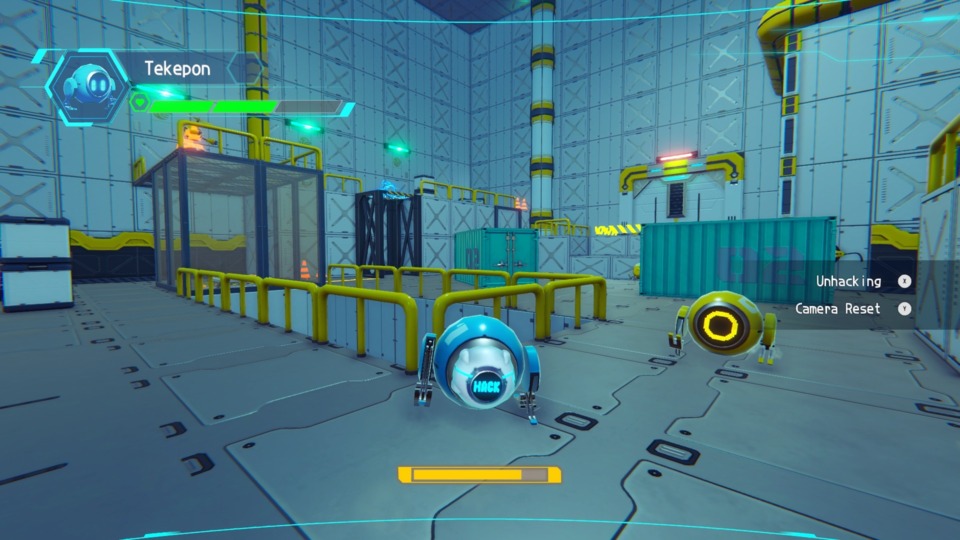
I'd say of the three Doronko Wanko feels the most like a fully-featured game though, conversely, also the one with the least amount of room to grow. I'm not sure how you'd expand on the idea besides by making the house bigger or full of more stuff, and it's already pretty expensive and busy. The other two could feasibly be expanded into commercial Indie-tier games or, as previously stated, integrated into a larger game as some kind of dungeon-specific gimmick. I guess the one thing we all learned here today is that I'm getting impatient for new Tales games again. Anyway, they're all free on Steam and have that short and sweet approach that's easy on the scheduling (you could beat any one of them in a single lunch break) so go ahead and check them out if you haven't already.
The Weeb Weeview
If I'm being honest, I haven't checked out too many of the new shows this season. There's certainly plenty of them to choose from but I've mostly been dedicating my anime time this month to catching up with That Time I Was Reincarnated as a Slime, which just began its third season. So I'll talk about that and then suggest some shows where I've either checked out the premieres or have heard good things. I might recommend a video from this learned otaku from the Great North (Ottawaku? Except I think he's from Vancouver) who tends to be very insightful on all matters anime; I've been taking a few suggestions from his round-ups of late, especially when it comes to those that qualify as "enjoyable trash" in his view since those tend to make the best "sticking something on while I'm eating" fodder. Naturally, a lot of isekai makes its way into that category also, and I've got two new ones this season I've been watching after having read some of the manga they were (possibly indirectly) drawn from. I'll mention those after the main event here.
So, yeah, back to Reincarnated as a Slime, or Tensura for short (an abbreviation derived from its original Japanese title). The specifics aren't all that interesting—middle-aged business dude gets randomly stabbed, reincarnates as a slime deep beneath a fantasy world, through various circumstances ends up befriending a sealed, catastrophe-level True Dragon called Veldora (who's a total bro, by the way), escapes the underground and establishes a new city in the middle of the monster-infested Jura Forest, and gradually rises up as a major political power player in the world—but the core of the show's appeal is in its portrayal of the protagonist Rimuru as not some teenaged idealist struggling to find their place but a responsible adult that, while certainly having his vices (his final dying request to his subordinate in Tokyo was to erase his PC's hard-drive) is able to approach problems (and problem people) with a measured, proactive, but ultimately empathetic mindset. That he's also this agendered slime being capable of devouring anything in his path almost doesn't factor into the equation except when something he can't reason with decides to make trouble in his neighborhood. As the cast of mostly monsters continues to expand, it's taken on the tone of an ensemble comedy and the humor's been pretty good all-round if perhaps a little too beholden to anime tropes. In the rare times it does action, those scenes are really electric due to how powerful everyone in Rimuru's orbit has become due to his ongoing support and some unique rules about how monsters grow stronger once they're given names (which I've seen a few other shows do too, most recently Fluffy Paradise).
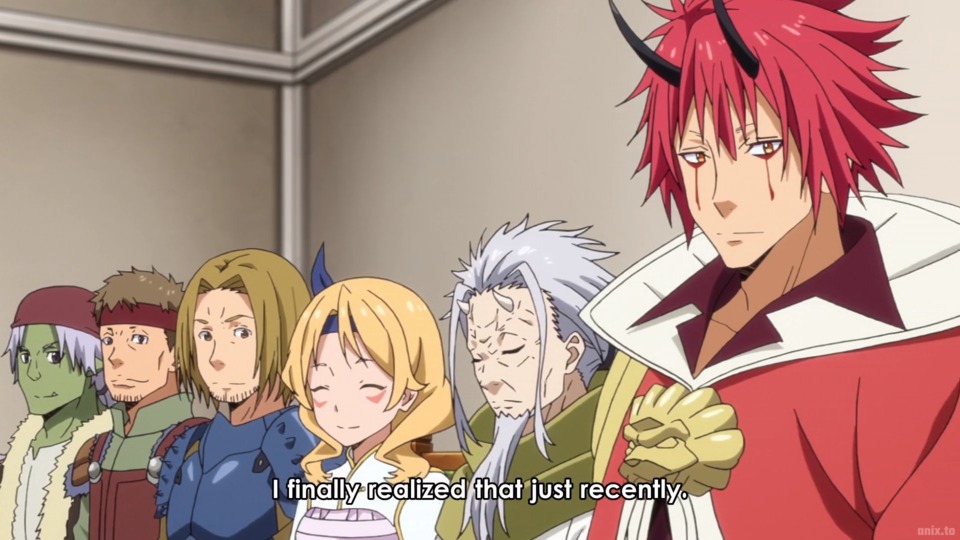
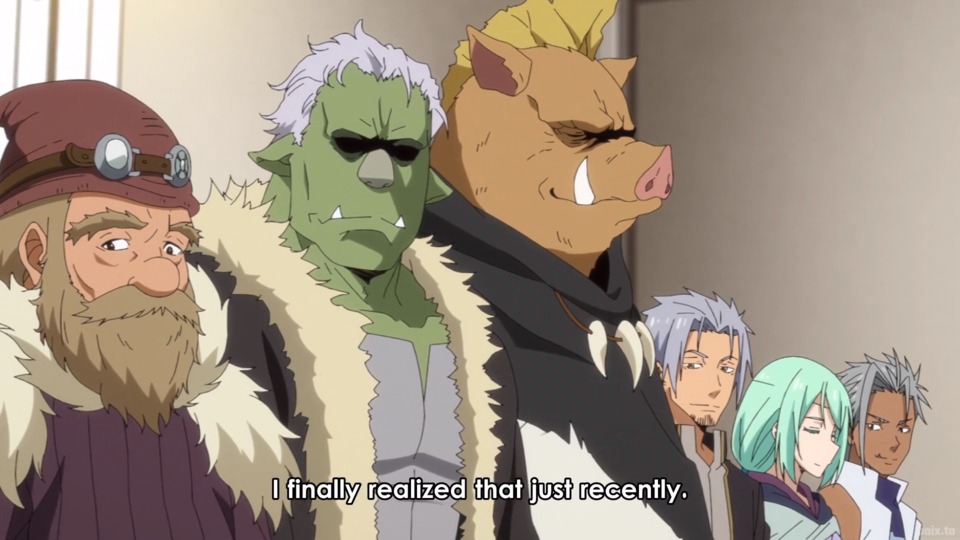
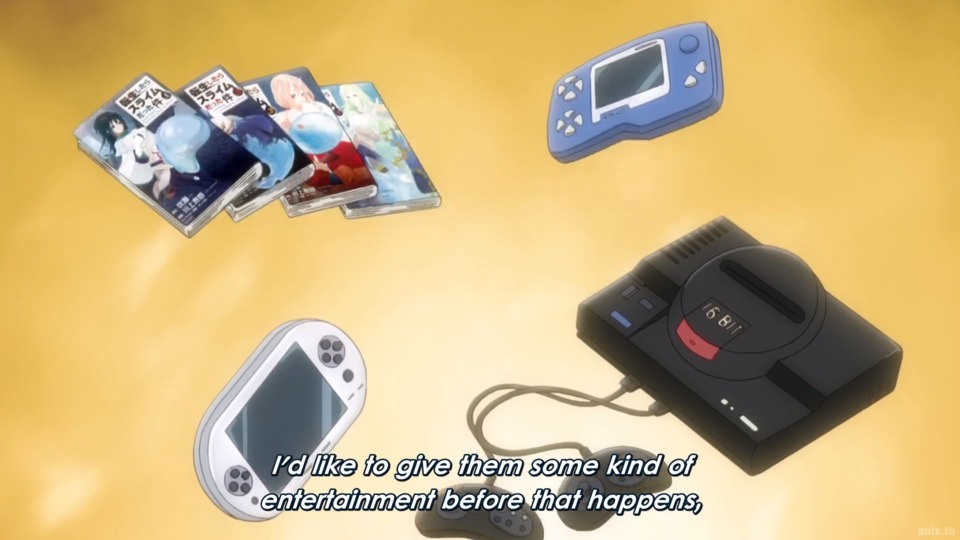
I've completed the first two seasons and am now catching up on all of the bonus content that showed up in the interim, including some interstitial bonus recap stuff, just in case they introduce a character into the main series because I'm that invested now in the extended ancillary cast of loveable goofballs and the way the show keeps humanizing its more sympathetic villains and winning them over to Rimuru's pacifistic, pro-civilization way of thinking (either that, or getting them addicted to manga). It's almost become a Suikoden game with the number of named characters populating the Jura Forest Federation all offering their distinct talents and points of view.
Other shows, of which I'll probably talk more about next month, include KonoSuba (another funny isekai also in its third season), two brand new isekai called Chillin' in Another World with Level 2 Super Cheat Powers and As a Reincarnated Aristocrat, I'll Use My Appraisal Skill to Rise in the World (very descriptive titles), the second cour of Delicious in Dungeon, and the highschool brawler Wind Breaker. I've my eye on a few others, but it's going to come down to what I have time (and/or sub money) to watch. Man, but do they make a lot of this anime stuff though.
Too Long, Do Relinks?
- Indie Game of the Week 364: Salt and Sacrifice
- Indie Game of the Week 365: Eiyuden Chronicle: Rising
- Indie Game of the Week 366: Ghostrunner
- Indie Game of the Week 367: 9 Years of Shadows
- 360 in 360: Episode 14
- Mega Archive CD: Part IX: From Vay to Arslan Senki
- Anyway, Here's WonderSwan (Part Three)
- 64 in 64: Episode 41
Log in to comment